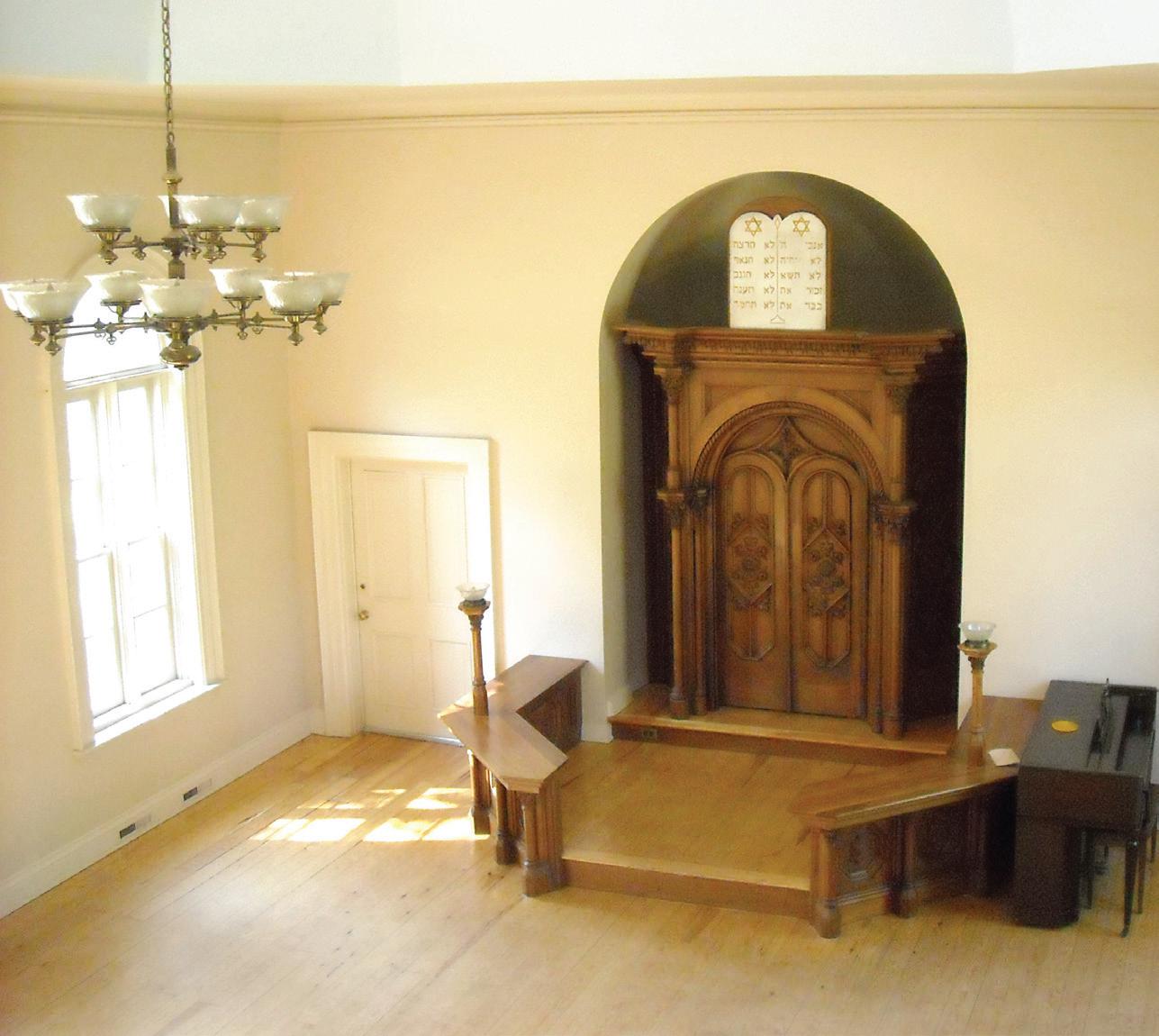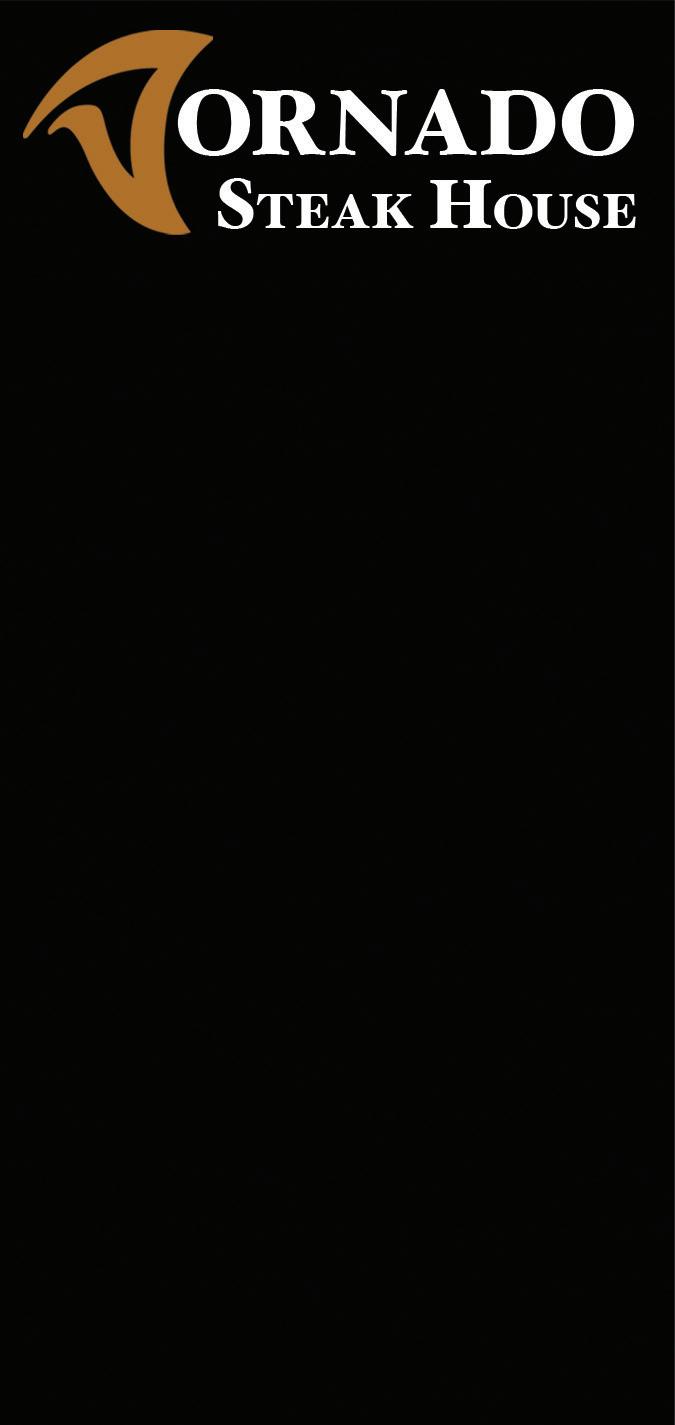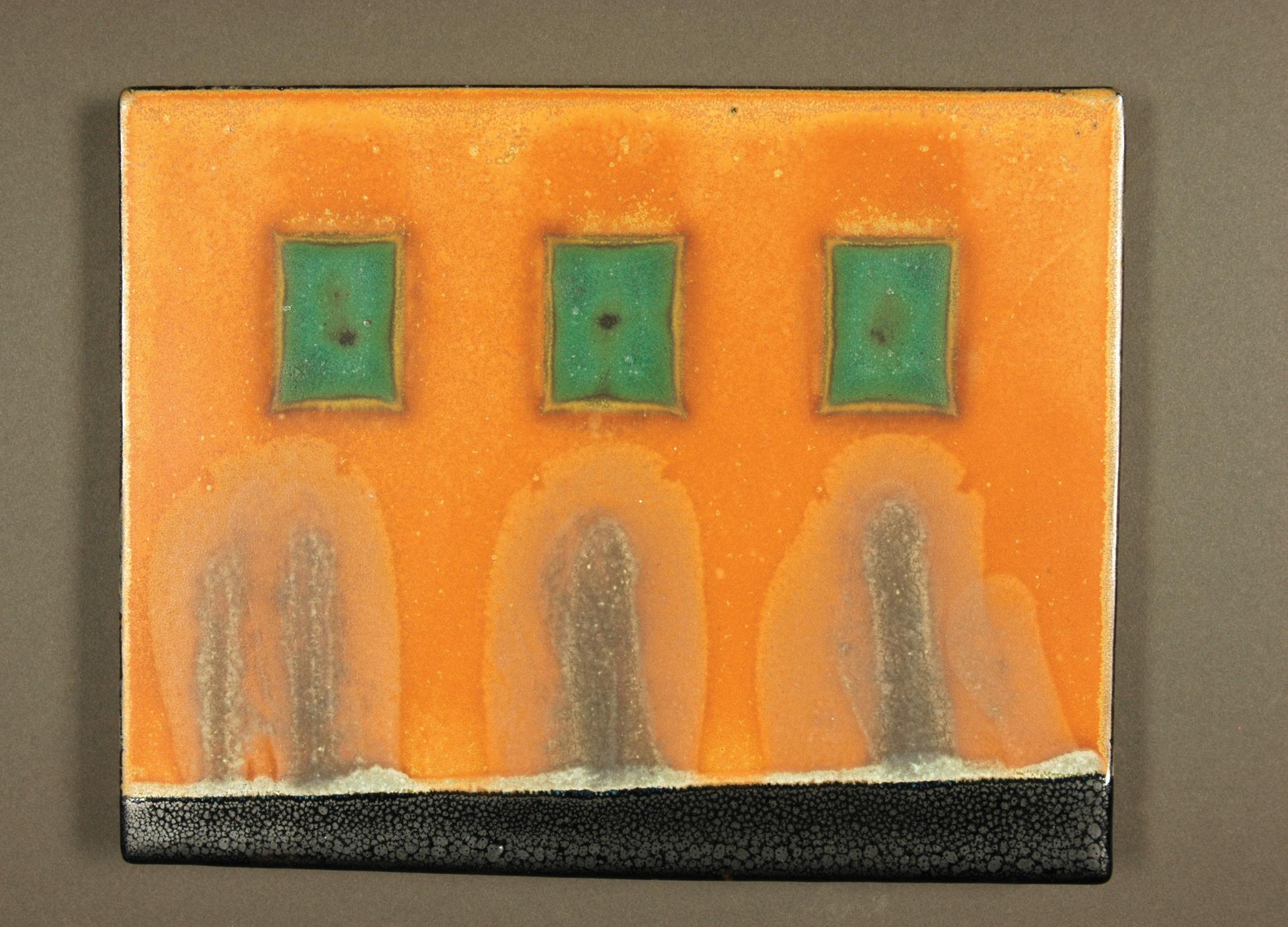
6 minute read
landmark
Gates of Heaven Synagogue by Jeanne Engle

Advertisement
As we approach the holiday giving season, homage should be paid to those whose generosity 50 years ago was instrumental in saving the Gates of Heaven Synagogue, which is now located at 302 E. Gorham Street in the James Madison Park near downtown Madison.
The synagogue, Madison’s oldest and most likely the nation’s second oldest, was constructed in 1863 by Madison’s Jewish community as a place of worship. Gates of Heaven was listed in 1970 on the National Register of Historic Places, and the following year it was designated a Madison landmark.
Samuel Klauber emigrated from Bohemia (today’s Czech Republic) and moved to Lake Mills in 1848, where he earned a living as an itinerant peddler. He carried a pack on his back from which he sold buttons, needles, trimmings, and other items to farm wives in the area. In 1851, upon being the first Jew to move to Madison, Klauber opened a clothing store that he operated until 1879.
Klauber was among 17 Jewish families that formed the congregation of Ahavath Achim (Brother Love) in 1856. The name was later changed to Shaare Shomayim (Gates of Heaven). Initially, services were conducted in Klauber’s home, but in 1862, the congregation purchased a lot on West Washington Avenue. Prominent Madison architect August Kutzbock, who also designed Wisconsin’s second capitol, was hired to design the synagogue. The builders were German immigrants.
According to the National Register nomination, the style of the synagogue reflects “a degree of Victorian eclecticism, with German and Gothic influences in a style identified by [late] New York Times architectural writer Ada Louise Huxtable as ‘Rundbogenstil,’” German for round-arched style. Rundbogenstil is represented in all the windows of the synagogue.
The Gates of Heaven exterior features an ornate upper wall above the roof similar to what would be found on a medieval castle. A triangular façade capped with stone rises above the gable of the front vestibule. In the center of the triangle, a large, circular, stoneframed opening once contained a decorative wheel window. The façade of the vestibule also rises as a triangle capped with stone.
Sandstone and white brick were used in the synagogue’s construction. The sandstone was quarried from behind the 3400 block of today’s University Avenue and was hauled during the winter over the ice and snow on sleds. The joists were huge oak beams that still hold strong to this day. The cost of the building was $4,000.
The dedication of the Gates of Heaven synagogue took place on September 4, 1863, with many dignitaries in attendance. Klauber opened the doors for a two-by-two procession of the congregation’s members into the building. A Milwaukee rabbi gave the sermon and spoke on his hope for the growth of a liberal Jewish faith in free America. A dinner for 75 concluded the day’s activities. In 1865, the Wisconsin Legislature met in the synagogue for a public memorial to mourn the death of Abraham Lincoln.
The congregation had difficulty finding a rabbi, and its numbers dwindled over the years. Finally, in 1879, those that remained gave up and rented the building to the Unitarian Society. Subsequent tenants in the synagogue included a school, the Women’s Christian Temperance Union, the First Church of Christ Scientist, and the English Lutheran Church. In 1916, the building was sold for $7,000 to Arthur and George Gill, who conducted their undertaking business there until 1930.
Later, the Gates of Heaven synagogue became a tea room, another funeral home, a depository for books and papers by the U.S. government during World War II, another house of worship, a dental office, and a veterinarian’s office. The last private use was as the headquarters of then-Congressman Robert Kastenmeier. The Fiore Coal & Oil Company purchased the property in the 1960s and sold it in 1970 for commercial development—the synagogue was slated for demolition.
Dr. Norton Stoler completed his swim at the YMCA and was walking out with the late Rabbi Manfred Swarsensky, a Holocaust survivor and founder of Temple Beth El in Madison. The rabbi mentioned that it was too bad the synagogue was going to be torn down. Dr. Stoler conferred with his wife, Lois, and, because both were interested in historic preservation, they decided they would save the synagogue. They organized as the Gates of Heaven Preservation Fund in 1970 and began their fundraising campaign.
Their goal was to move the more-than100-year-old synagogue across the isthmus to James Madison Park, where it would become the property of Madison Parks, and to have it restored to its original appearance. The estimated cost was nearly $60,000.
Funding for a study to determine if moving the synagogue was feasible was provided in part by the Taychopera Foundation. The nonprofit was organized to encourage and assist in the preservation of structures of architectural and historical significance in Madison and the surrounding area. Fortunately, the Fiore Company delayed demolition so the funds could be raised to move the synagogue.
The Stolers conducted bake sales, rummage sales, art sales, wine and cheese tastings, and open houses in historic homes. They prepared a brochure about the synagogue and its significance and sent out mailings. College-aged volunteers solicited doorto-door donations. Thinking about how to spread the word about the Preservation Fund’s efforts, Lois says, “I contacted New York Times writer Huxtable, who wrote a piece about the synagogue. As a result of her story, donations came in from across the country.”
Local businesses and labor unions pitched in, offering in-kind services as well as a percentage of proceeds from sales. In addition, a matching historic preservation grant was secured from the U.S. Department of Housing & Urban Development for $30,000 in May 1971.
Moving day arrived on July 17, 1971. The mover was the Belding Moving Company of East Chicago, IL. The 200-ton stone building was wrapped with cables and gently lowered onto a trailer with 96 aircraft wheels that was pulled by a truck. A World War II tanker strapped to the trailer followed behind, acting as brakes. Dr. Stoler had placed a bottle of champagne inside the building, hoping it would make it to the new location about a mile across Madison’s isthmus.
The move took all day, needing the cooperation of Madison Gas & Electric to make sure no overhead electric lines were disturbed. Crew members popped the intact bottle of champagne that night as they celebrated the success of the move. “I almost couldn’t believe the move went as well as it did,” says Lois. “I wasn’t 100 percent sure the building, that was a bit wobbly, would hold together.”
Saving the Gates of Heaven from demolition was Madison’s first successful historic preservation effort. Madisonions can be thankful for people like the late Dr. Stoler and Lois, who paved the way for the preservation of other 19th and 20th century buildings.
Jeanne Engle is a freelance writer.
Photographs by Madison Parks.

Photograph by MOD Media Productions
Famous for Steaks
Home of the 20 oz. Bone-in Tenderloin
• Friday Night—Fresh Pan-fried
Lake Perch • Saturday Night—Prime Rib • Sunday—Chicken Dinner • Late Night Bar Menu & Happy Hour (Beginning at 10:00 pm) • Seasonal Outdoor Dining in our Grotto • Corral Room Available for
Private Parties

OPEN DAILY Mon-Fri Bar Opens at 4:30 pm—Dinner at 5:00 pm Weekends Open at 5:00 pm
For Reservations Call: 256-3570
Entrances at 116 S. Hamilton & 115 W. Main Street tornadosteakhouse.com











